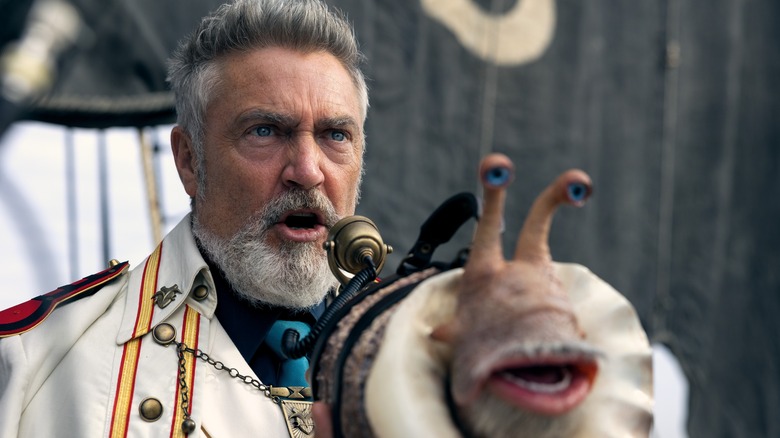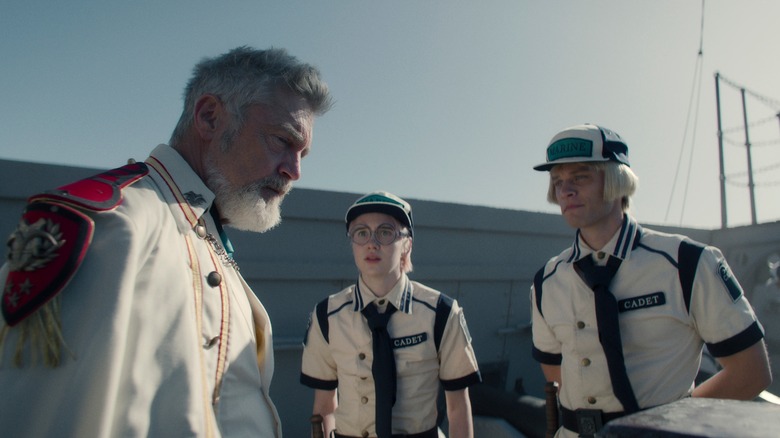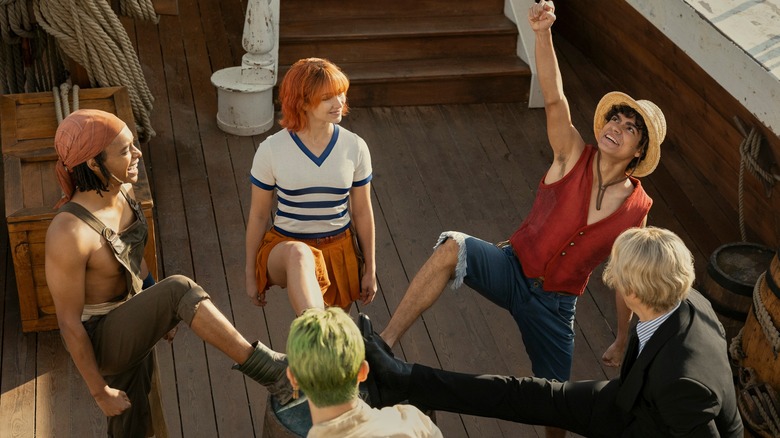The Biggest Thing Netflix's One Piece Changes From The Anime (And The One It Keeps)
The following contains spoilers for Netflix's "One Piece."
"One Piece" is the biggest manga in the world for a reason. Eiichiro Oda's magnum opus crafts a vast and fleshed-out world with a sense of history and lore, a story with complex characters and themes, and an epic story told across over a thousand chapters (and counting). Because of the nature of the story and its intricate writing, to even try to condense the scope of the story into seasons of TV — especially the shorter season runs on streaming – feels like one heck of a challenge.
This is why it was always inevitable that the live-action "One Piece" show on Netflix would make changes to the source material when telling the story of the East Blue Saga that kicks off the story of Monkey D. Luffy and his journey to becoming the King of the Pirates and find the legendary treasure One Piece. Some of the changes simply have to do with the timing issue, like skipping the crew hanging out and being involved with the villagers they meet at each new island, or changes in characterization like Sanji being less pervy. Even if it means we don't see the tale of Chouchou the faithful dog, it makes sense to sacrifice some of the smaller, and often repetitive, story beats in favor of the big picture stuff and the bigger character moments.
Thankfully, Oda himself was heavily involved in the making of "One Piece," from the casting to the look and even the scripts. That makes the bigger changes the ones that impact not just this season but the potential future of this live-action adaptation so interesting, because they offer a new way of experiencing the story.
Ch-ch-ch-ch-changes
One of the biggest changes the live-action adaptation of "One Piece" makes is remixing the original manga, rearranging events and character stories. We see this with the way Arlong is introduced far earlier than he was in the manga, while Buggy the Clown continues to show up even after Luffy beats him. This allows the audience to spend more time with the characters (which is always great when it comes to Buggy), and to build them into more than just villains-of-the-week.
Then there's Monkey D. Garp, the Hero of the Marines, and Luffy's grandfather. This is the biggest change "One Piece" makes, and it has huge repercussions for the show. You see, Garp is very much part of the manga, but he doesn't show up until much later, in chapter 431 (by comparison, the live-action show only covers up to chapter 95) when we learn that Luffy's grandfather is in the Marines. We did see a bit of him before that, though, in cover stories that show how Koby, an early friend of Luffy's, joined the Marines.
This cover story, relatively inconsequential to the manga and considered filler in the anime by many — becomes a B-story in the live-action show as we see Koby join the Marines, train to be as strong as Luffy, and realize that they are not all he made them up to be. This is the idea that justifies the show's existence and makes it a complement to the anime and the manga. By having Koby be more than a one-off character (who returns later in the story), the live-action "One Piece" offers an interesting parallel to Luffy's story, one that makes the struggle between pirates and Marines more complicated, as the authorities are corrupt, while pirates can be both noble and also violent jerks.
Hitting at the core of the story
The problem is that these changes make the characters' return as told in the manga, and the thematic importance of the order of those reveals, less impactful because we've gotten them way in advance. On the one hand, knowing that Luffy has a Vice-Admiral grandpa, especially one that already let him go once, lessens the stakes when it comes to the Straw Hats' future encounters with the Marines. On the other hand, it gives the story an extra layer of emotion, because we know there is a personal connection whenever the Marines are involved — plus, it gives the story a cool little cat-and-mouse dynamic if Koby and Garp continue to be involved.
Rearranging things and teasing future characters and stories out of order works as fan service, because it both reminds manga fans of what's to come while also making the world of "One Piece" feel bigger and lived in. Take the inclusion of an instrumental version of "Bink's Brew" in the first episode, a song with a deep meaning later on, but one that the story tells us is just a prevalent song that Shanks' crew liked to sing. It makes sense they'd play it in the flashbacks of the first episode, and makes for a cool nod to the source material.
Despite these changes, "One Piece" still keeps the most important thing from the original manga: Luffy's inhuman ability to fight for everyone's freedom to follow their dreams. This idea is the core of "One Piece," and the reason why the show uses pirates to tell its story. Luffy is not just an adventurer, he is inadvertently a freedom fighter. Even when it's different, "One Piece" remains essentially just as Oda imagined over 25 years ago.


